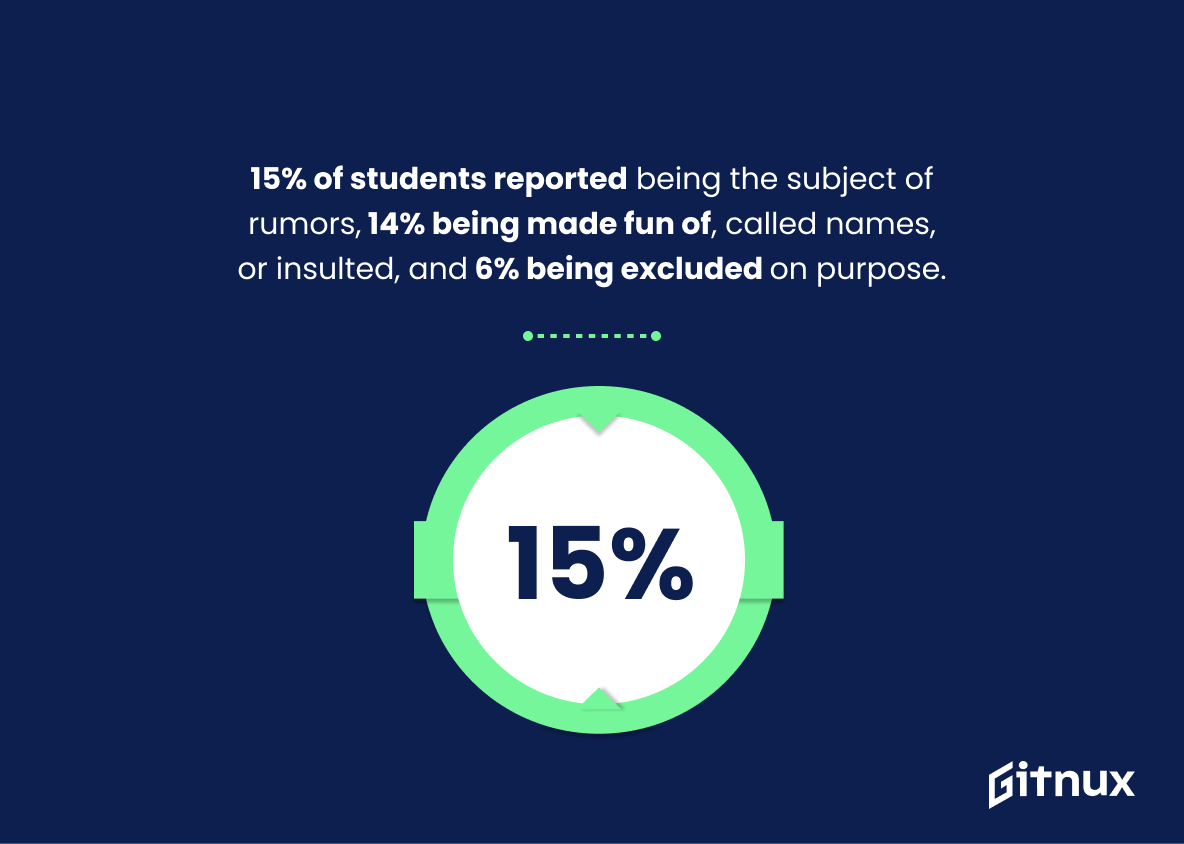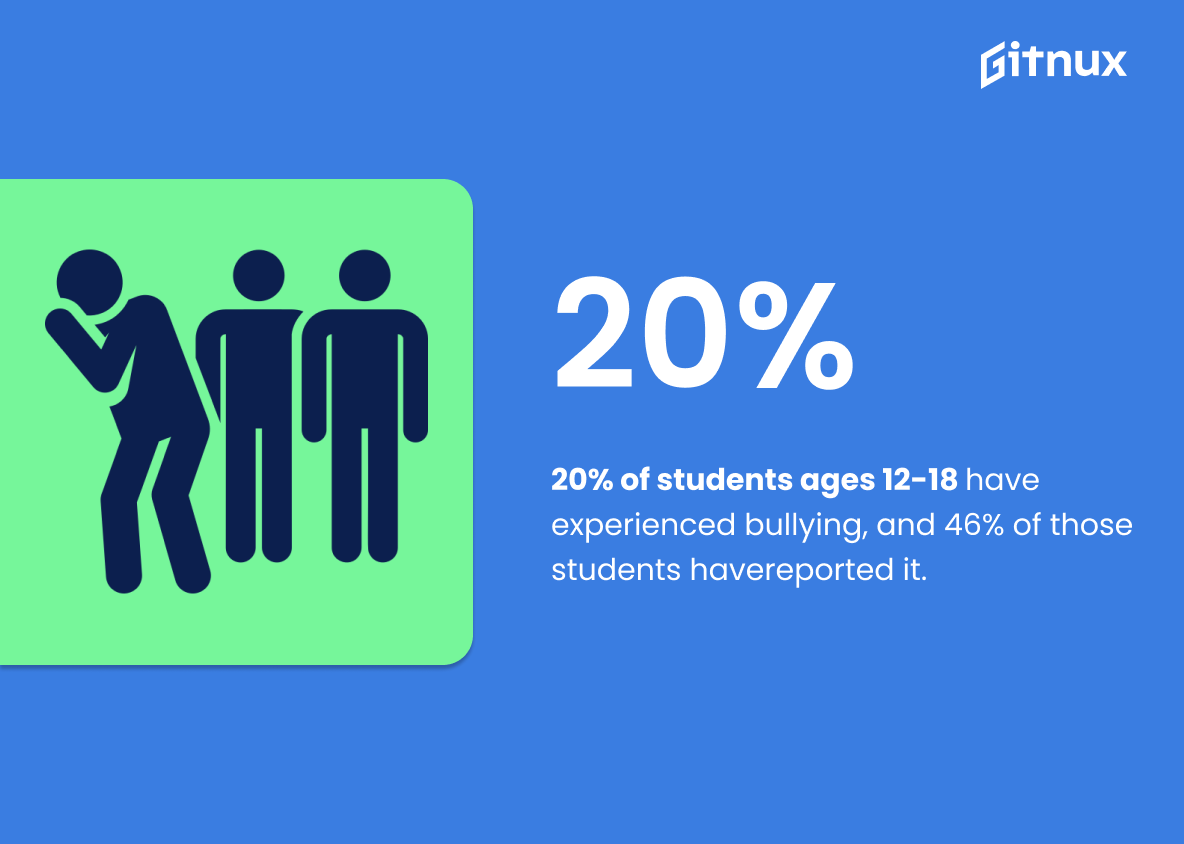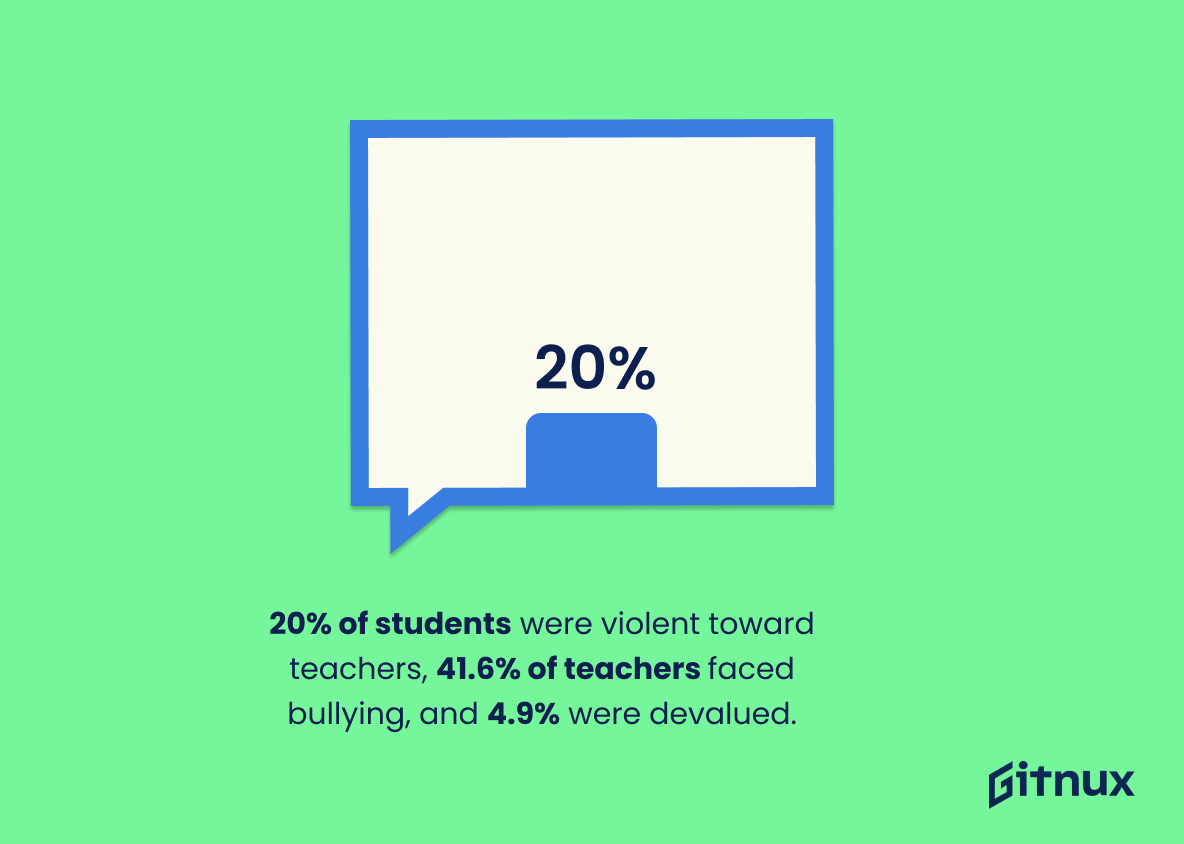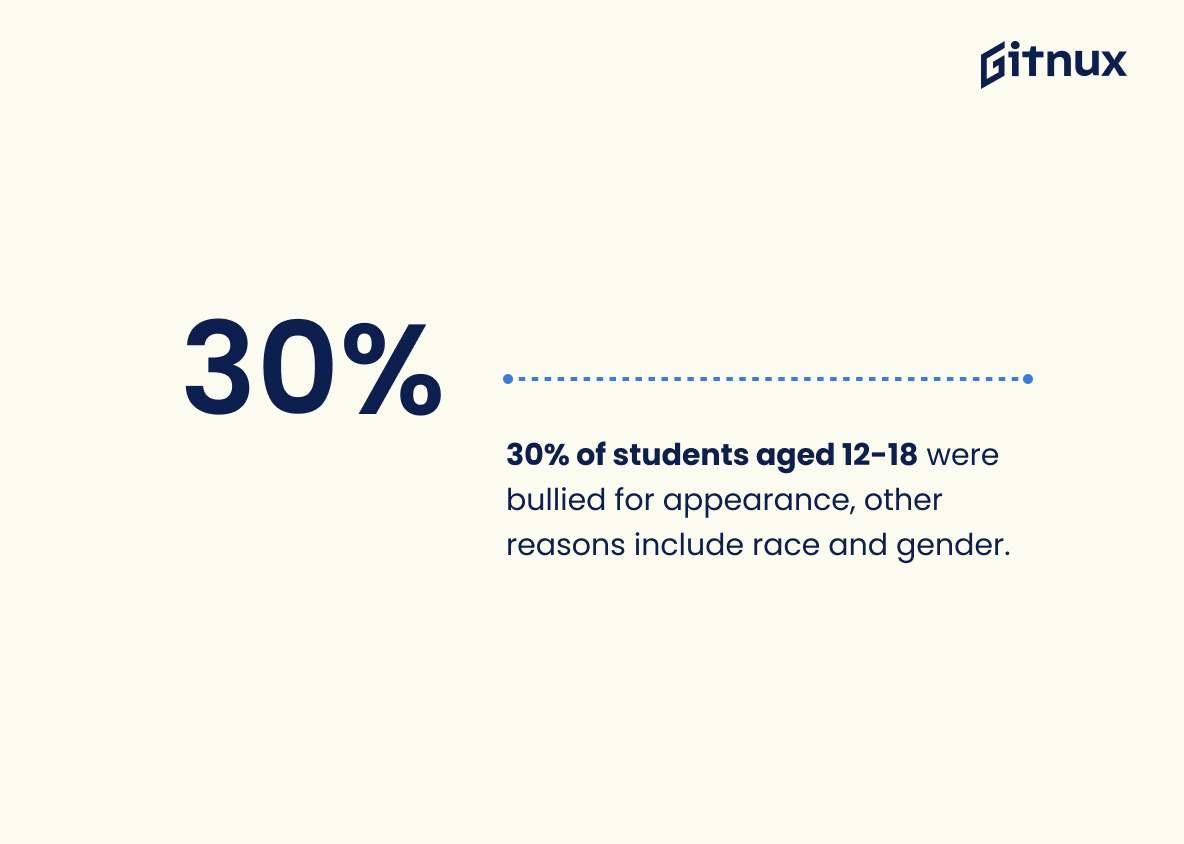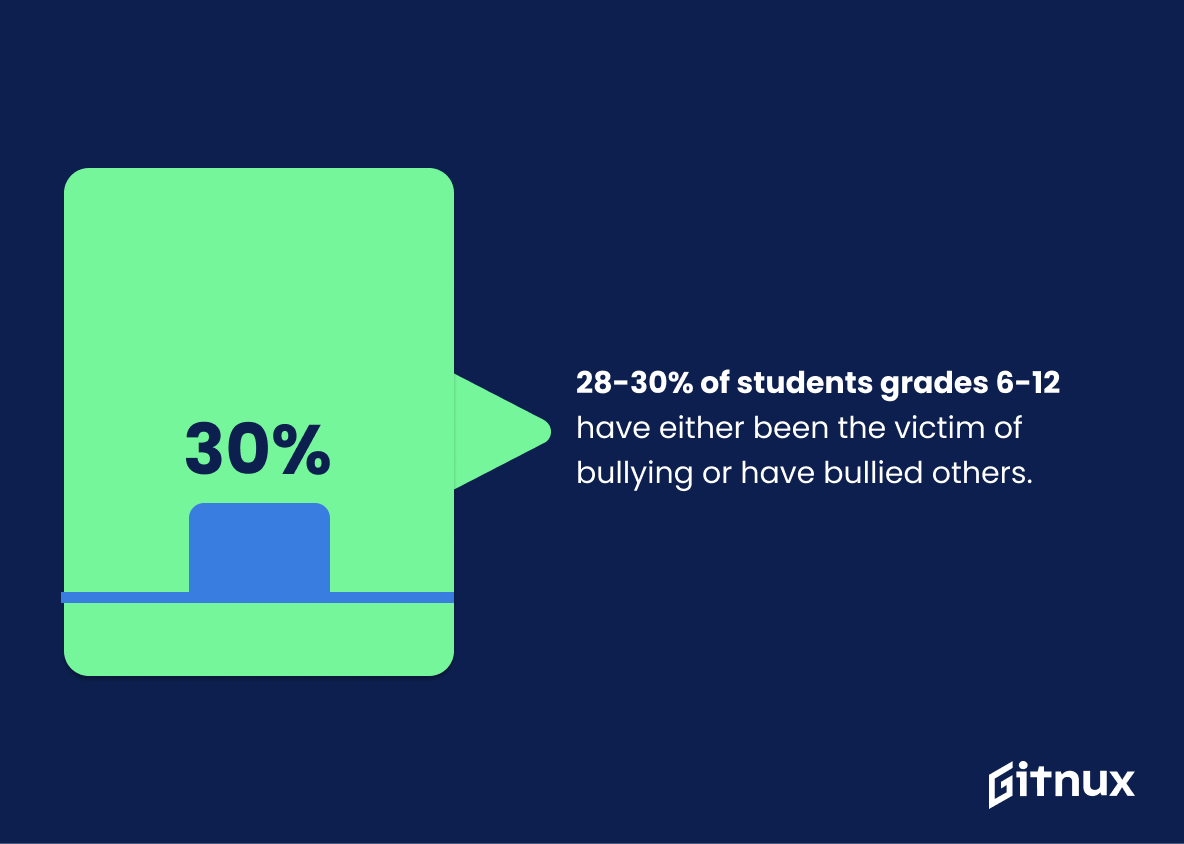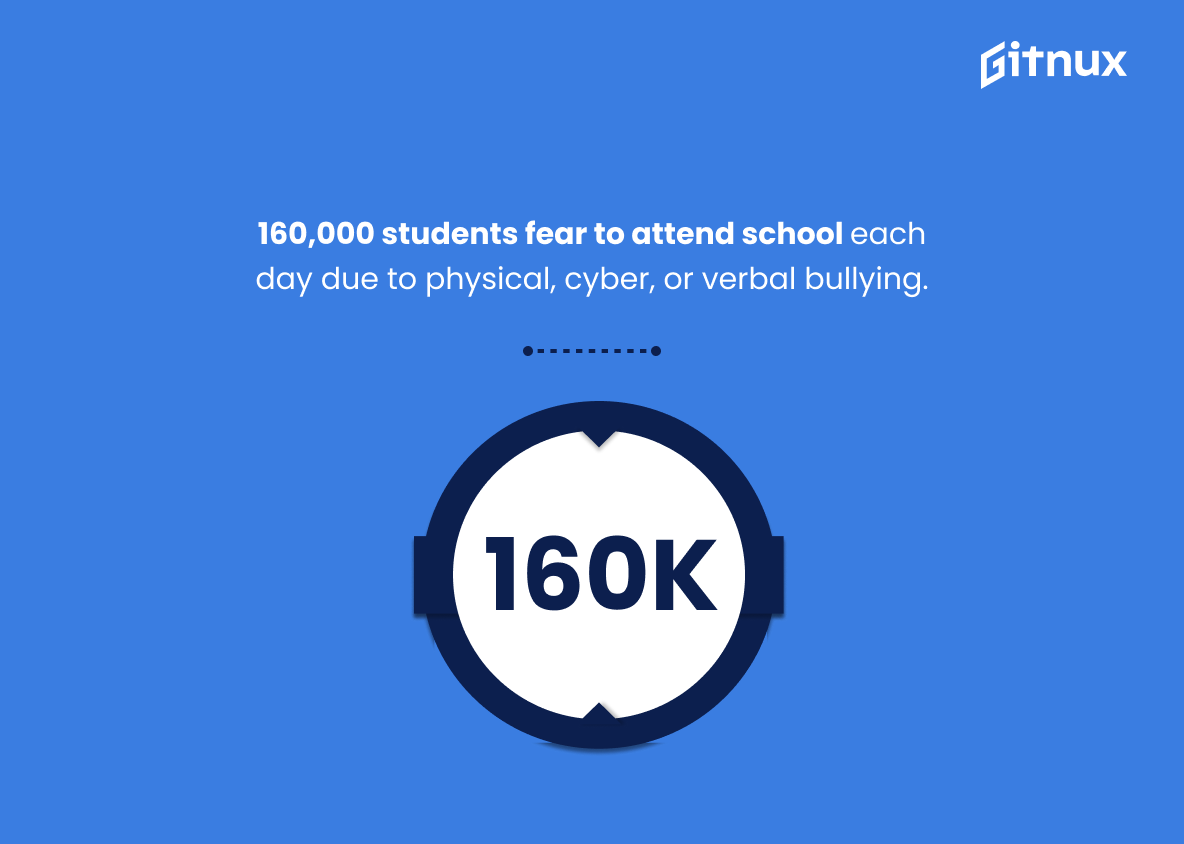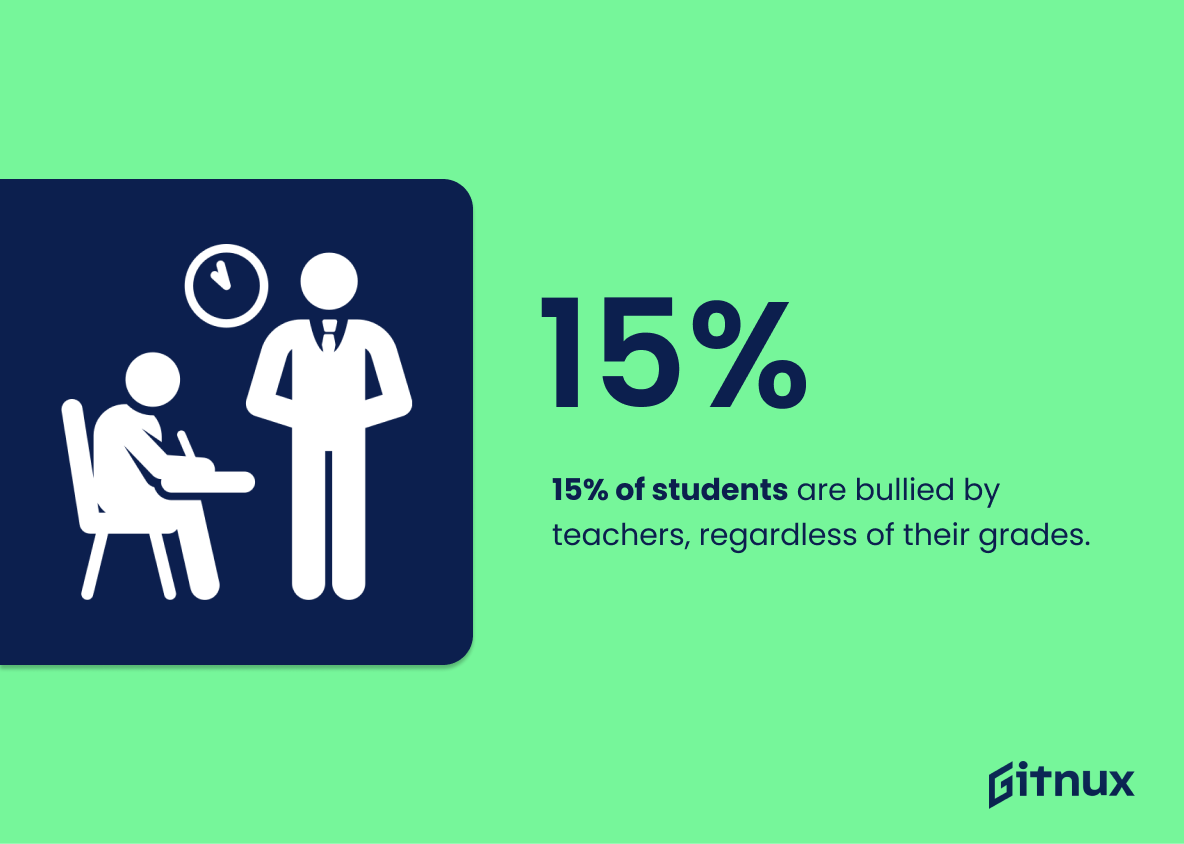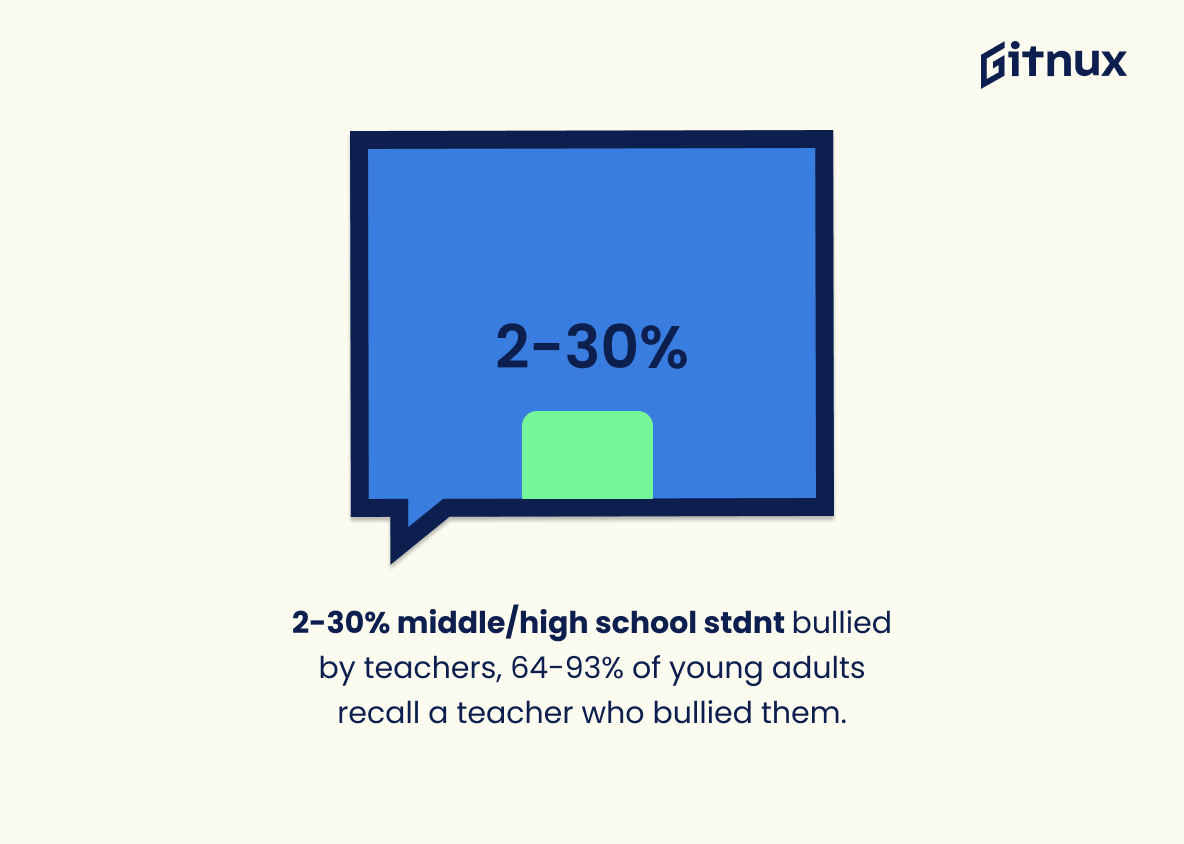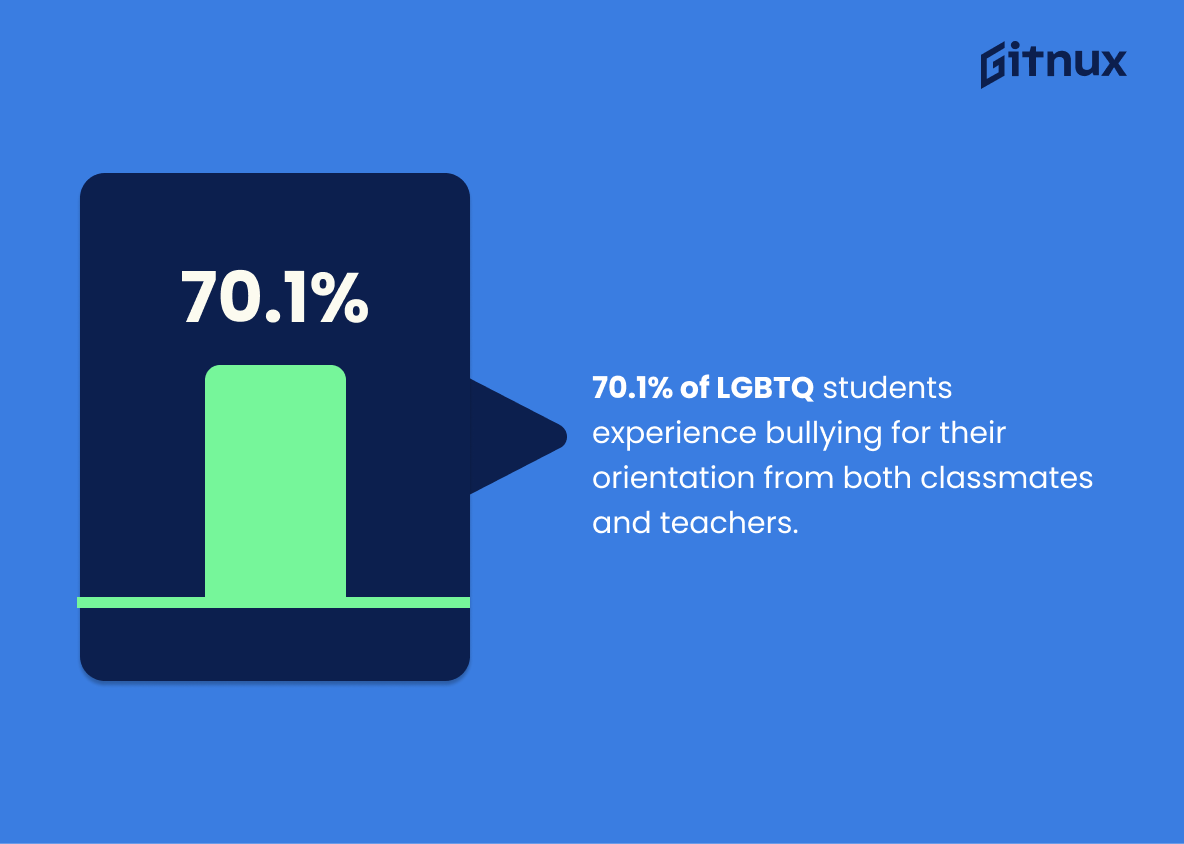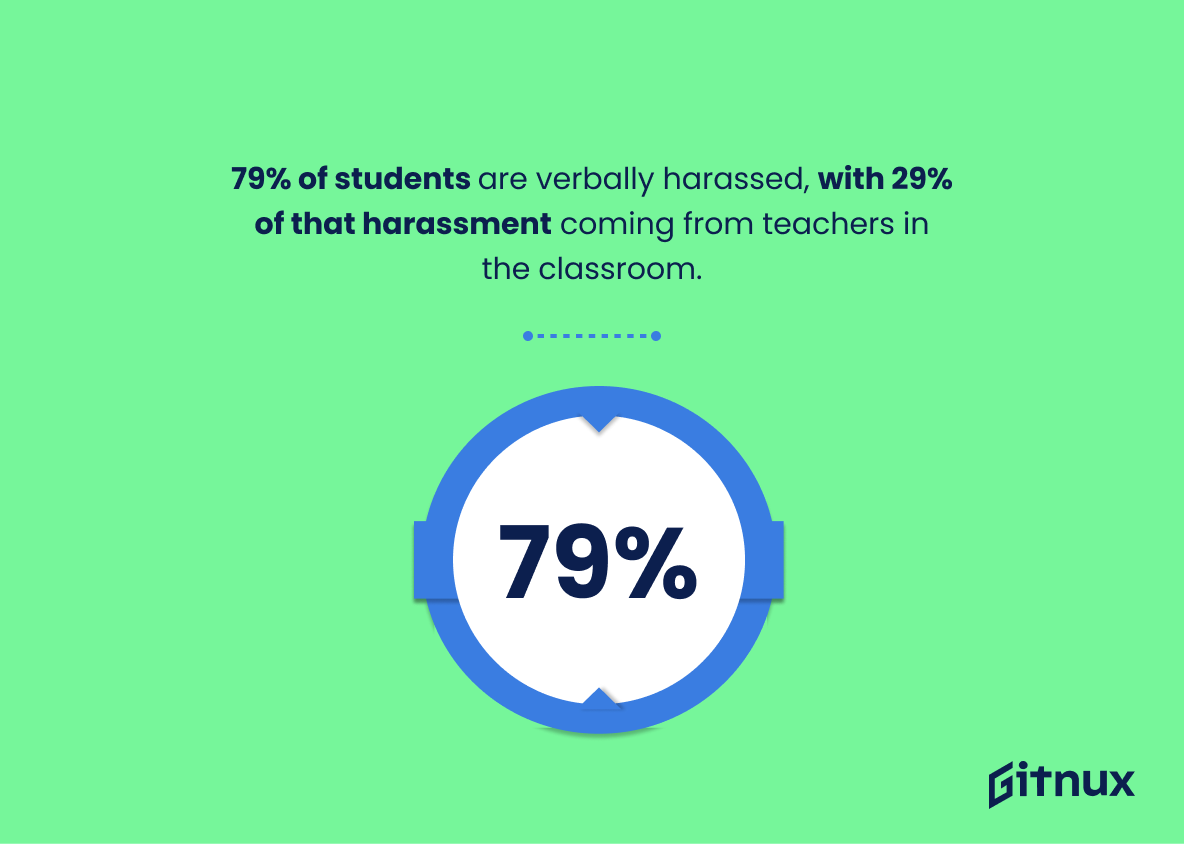Teacher bullying of students is a serious problem in schools around the world. It can have a devastating impact on the mental and emotional health of students, and can even lead to physical harm.
Unfortunately, it is a problem that is often overlooked or ignored. In this article, we will take a look at the statistics surrounding teacher bullying of students, and discuss what can be done to address this issue. We will also explore the long-term effects of teacher bullying on students, and how it can be prevented.
Teacher Bullying of Students: Most Important Statistics
30% of students in the 12–18 age group have been bullied based on physical appearance, with race, gender, disability, ethnicity, religion, and sexual orientation also being common reasons.
15% of students are bullied by teachers, regardless of their grades.
Teacher Bullying of Students: Statistics Overview
Bullying occurs in school premises, with 43% happening in the hallway or stairwell.
Bullying is a widespread problem in schools, and that teachers need to be aware of the different places where bullying can take place in order to better protect students.
64% of young adults report being bullied by a teacher at least once in their lifetime.
Teacher bullying is a widespread issue that affects many students. It highlights the need for more research and interventions to address this problem and ensure that all students have a safe and supportive learning environment.
Bullying is a discipline problem in nearly 14% of public schools, with the highest rates occurring in middle schools (28%).
This statistic is important because it highlights the prevalence of bullying in public schools, particularly in middle schools. It is concerning that bullying is so common in public schools, as it can have long-term effects on students’ mental health and academic performance.
This statistic also highlights the need for teachers and administrators to take proactive steps to address bullying in their schools.
87% of people surveyed believe that shootings are motivated by a desire to retaliate against those who have hurt them, 54% believe that witnessing physical abuse at home can lead to violence in school, and 61% believe that students shoot others because they have been victims of physical abuse at home.
Students who are victims of physical abuse at home may be more likely to act out violently in school, including bullying other students or shooting them.
This highlights the importance of addressing physical abuse at home in order to prevent violence in school.
15% of students reported being the subject of rumors, 14% reported being made fun of, called names, or insulted, and 6% reported being excluded from activities on purpose.
Bullying is a pervasive issue in schools, and that it can take many forms. It is important for teachers to be aware of the different types of bullying and to take steps to prevent it in their classrooms.
Approximately 20% of students ages 12-18 have experienced bullying, and 46% of those students have notified an adult at school about it.
A large number of students are experiencing bullying, and they are taking the initiative to tell an adult about it. This is important because it means that adults in the school system are aware of the issue and can take steps to address it.
20% of students perpetrated violence against teachers, 41.6% of teachers reported being bullied, and 4.9% of teachers experienced bullying in the form of devaluation.
Not only are students bullying teachers, but teachers are also being bullied by students. This highlights the importance of addressing bullying in both directions in order to create a safe and healthy learning environment.
30% of students in the 12–18 age group have been bullied based on physical appearance, with race, gender, disability, ethnicity, religion, and sexual orientation also being common reasons.
This statistic is important in the context of Teacher Bullying Students Statistics because it highlights the prevalence of bullying among students, and the various factors that can contribute to it.
It also highlights the need for teachers to be aware of the different types of bullying and to take steps to prevent it in their classrooms.
28-30% of students in grades 6-12 have either been the victim of bullying or have bullied other students, with 10-14% of those victims having been bullied for more than 6 months.
It shows the prevalence of bullying among students, and how it can be cyclical. It is important for teachers to be aware of the prevalence of bullying among their students, as it can inform their approach to addressing bullying in the classroom.
160,000 students fear to attend school each day due to physical, cyber, or verbal bullying.
This statistic matters in the context of Teacher Bullying Students Statistics because it highlights the prevalence of bullying in schools, and the need for teachers to be aware of the issue and take steps to prevent it.
15% of students are bullied by teachers, regardless of their grades.
There is a prevalence of teacher bullying and it is not necessarily linked to student performance. It is important to recognize the prevalence of teacher bullying so that appropriate steps can be taken to address the issue.
2-30% of middle and secondary school students are bullied by their teachers, and 64-93% of young adults and high school/college students can identify at least one teacher who has bullied them.
This demonstrates the prevalence of teacher bullying among students of different ages, and the long-term effects it can have on young adults.
It also highlights the need for more research into the issue and for better policies and procedures to be implemented in order to protect students from teacher bullying.
6th, 7th, and 8th grade students are being bullied by teachers for low grades at high rates.
Teacher bullying of students is a pervasive issue in middle school, and that it is likely to have a negative effect on student performance and wellbeing.
70.1% of LGBTQ students experience bullying for their orientation from both classmates and teachers, with 59.5% feeling unsafe and 34.8% skipping lessons.
This statistic is important because it highlights the prevalence of teacher bullying of LGBTQ students and the impact it has on their safety and education.
79% of students are verbally harassed, with 29% of that harassment coming from teachers in the classroom.
There is a prevalence of verbal harassment in schools and an extent to which teachers are contributing to it. It is a clear indication that teacher bullying of students is an issue that needs to be addressed.
50% of students experience social harassment, and 29% of students experience physical bullying.
This statistic is important because it shows the prevalence of bullying among students, and how it can take on different forms.
It also highlights the need for teachers to be aware of the different types of bullying that students may be facing, and to take steps to prevent it.
Female are more likely to be bullied than male (24% vs. 17%).
Female students are more likely to experience bullying than male students, which can lead to negative consequences such as decreased academic performance and mental health issues.
25% of African American, 22% of Caucasians, 17% of Hispanic, and 9% of Asian students were bullied in school by teachers or classmates.
Bullying is a widespread issue that affects students of all nationalities. It is essential to recognize the prevalence of bullying in order to take steps to address it and create a safe learning environment for all students.
Bullied students are 1.7 times more likely to attempt suicide, which can lead to depression, low self-esteem, anxiety, academic difficulties, school violence, and family problems.
This matters because it highlights the serious consequences of teacher bullying students, which can have long-term impacts on the mental and physical health of students.
It is important to recognize the severity of teacher bullying and take steps to prevent it.
Students who are bullied at school are 3 times more likely to engage in delinquency and become more violent.
This statistic is important because it highlights the serious consequences of teacher bullying students. It shows that bullying can have a serious impact on students, leading to violence and delinquency.
This emphasizes the need for teachers to be aware of the potential consequences of their actions and to take steps to prevent bullying in the classroom.
Conclusion
In conclusion, teacher bullying of students is a serious issue that can have long-term negative effects on students’ academic performance, mental health, and overall well-being. It is essential that teachers, administrators, and parents work together to create a safe and supportive learning environment for all students.
The statistics presented in this blog post demonstrate the prevalence of teacher bullying and the need for increased awareness and prevention efforts.
References
1 – https://www.pacer.org/bullying/info/stats.asp
2 – https://www.verywellfamily.com/bullying-statistics-to-know-4589438
3 – https://www.cdc.gov/violenceprevention/youthviolence/bullyingresearch/fastfact.html
4 – https://www.a4kclub.org/get-the-facts/bullying-statistics
5 – https://nces.ed.gov/fastfacts/display.asp?id=719
6 – https://www.stopbullying.gov/resources/facts
7 – http://www.scielo.org.za/scielo.php?script=sci_arttext&pid=S0256-01002018000100012
8 – https://whattobecome.com/blog/bullying-statistics/
9 – https://www.medicinenet.com/bullying/article.htm
10 – https://study.com/learn/lesson/bullying-facts-types-statistics.html
11 – https://www.verywellfamily.com/bullying-statistics-to-know-4589438#toc-teacher-bullying-in-school
12 – https://www.verywellfamily.com/bullying-statistics-to-know-4589438#toc-teacher-bullying-in-school
13 – https://whattobecome.com/blog/bullying-statistics/
14 – https://whattobecome.com/blog/bullying-statistics/
15 – https://whattobecome.com/blog/bullying-statistics/
16 – https://whattobecome.com/blog/bullying-statistics/
17 – https://www.pacer.org/bullying/info/stats.asp
18 – https://study.com/teach/bullying-in-schools.html
19 – https://whattobecome.com/blog/bullying-statistics/
20 – https://whattobecome.com/blog/bullying-statistics/




